Conjuring up images of Ancient Egypt typically involves Hollywood films — Elizabeth Taylor as Cleopatra or Arnold Vosloo as high priest Imhotep in “The Mummy” — but the ancient civilization goes far beyond the typical Hollywood lens. In fact, this incredible society is behind many of the world’s most prominent inventions, architectural practices and even intellectual concepts like mathematics and geometry.
Why were cats so important in Ancient Egypt? How long did the civilization last? And what exactly happened between Cleopatra and Julius Caesar? We rounded up the most bizarre and interesting facts about Ancient Egypt that will answer all the questions you ever had about this incredible civilization — and more.
The Ancient Egyptian civilization spanned more than 3,000 years.
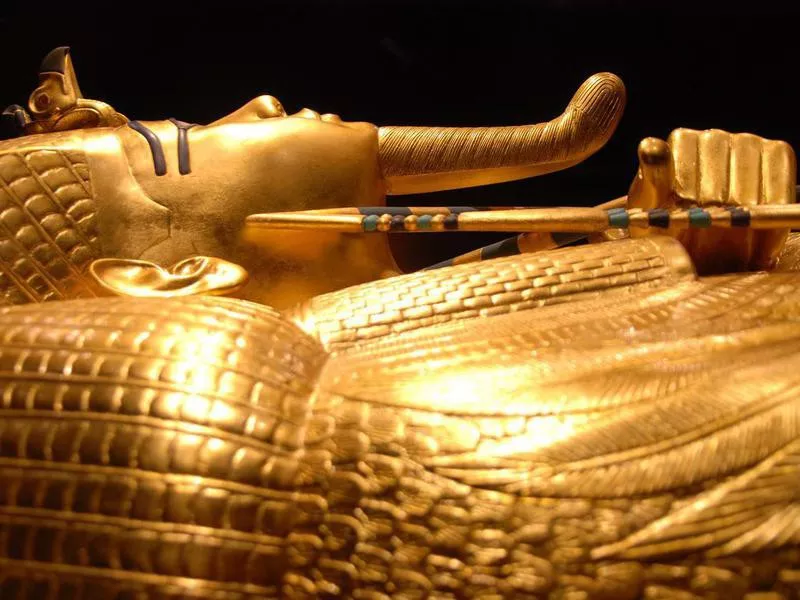
Getty Images
We might look at Ancient Egypt as a quick snapshot in time — King Tut only ruled for 10 years, after all.
But the world’s earliest civilization actually spanned more than 3,000 years, from 3150 B.C. to 641 A.D.
King Tut was only 9 years old when he became ruler of Ancient Egypt.
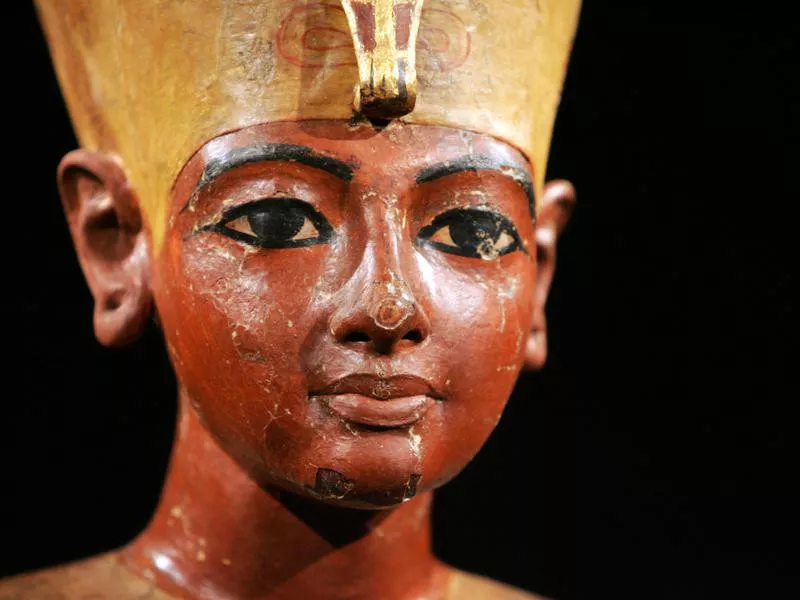
Jacqueline Larma / AP Photo
Tutankhamun, otherwise known as King Tut, is often regarded as one of the best, most well-known pharaohs in all of Ancient Egypt.
As such, it’s fair to picture the young ruler as a man — but King Tut took the throne when he was just 9 years old — and died only a decade later.
Cleopatra was not actually Egyptian by blood.

whitemay / Getty Images
Cleopatra might be another notorious Ancient Egyptian — but the symbol of the ancient civilization wasn’t Egpytian by blood.
Rather, she was born in Greece to a Macedonian Greek general (who happened to be friends with Alexander the Great).
It wasn’t uncommon for the royal family to marry relatives.
Cleopatra was the child of two siblings — and she married two of her brothers. King Tut’s lineage also stemmed from the same family tree — and he married his half-sister.
Why the rampant incest? The royal families of Ancient Egypt believed that adding outsiders to their bloodline would muddy its royal status.
King Tut had two children — but both died as infants
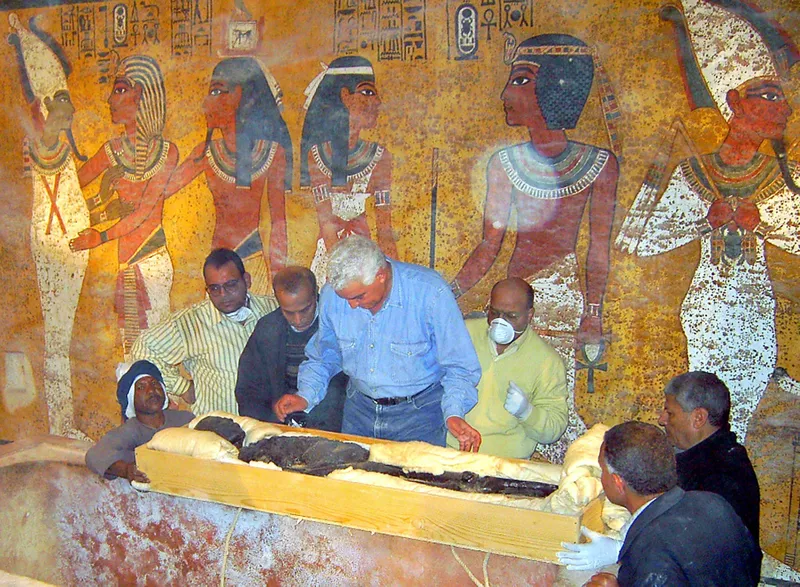
Saedi Press / AP Photo
King Tut and his half-sister, Ankhesenpaaten, had two daughters together — neither of which survived infancy, which researchers believe was due to a long lineage of inbreeding.
As such, King Tut’s death marked the end of his family’s rule.
It’s thought that King Tut suffered from scoliosis and other diseases.
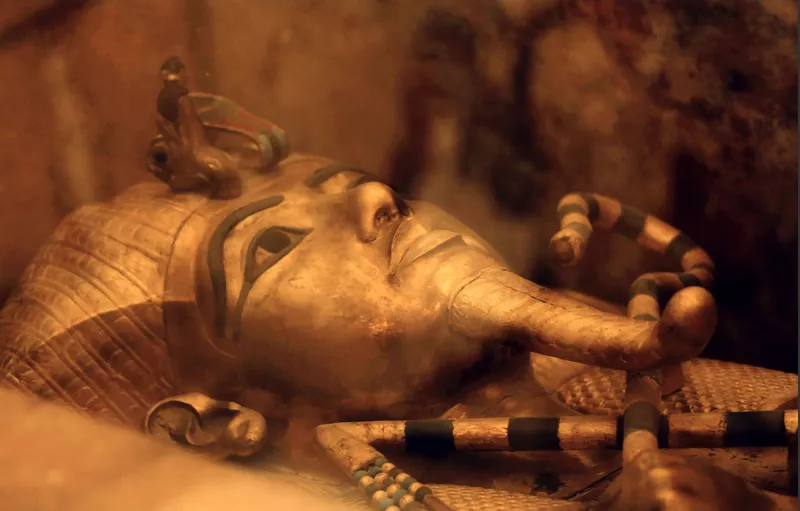
Amr Nabil / AP Photo
Although King Tut was often depicted as a strong and healthy ruler, research suggests that the young Pharaoh suffered from myriad diseases that would have seriously affected his mobility, including scoliosis, bone necrosis and a clubfoot.
Ancient Egyptian women and men were treated equally.
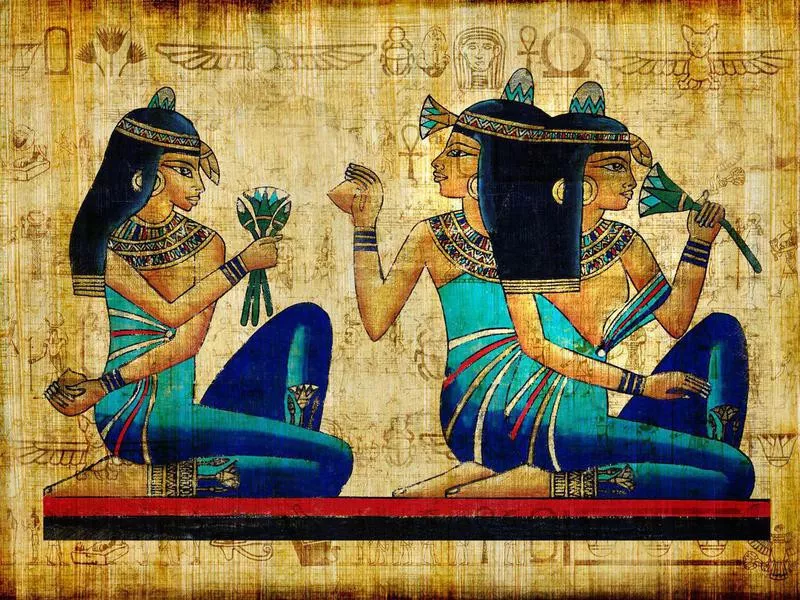
Freeartist / Getty Images
Ancient Egypt society was much more advanced in terms of equal rights for women — in fact, women in Ancient Egypt were treated much better than other women in comparable societies.
Although most rulers and prominent society members were men, Ancient Egyptian women could own property and were legally equal to men in court.
The Pyramids of Giza are naturally temperature controlled.

WitR / Getty Images
Although the city of Cairo sees temperatures up to 95 degrees Fahrenheit come summertime, the interior of the Pyramids of Giza are naturally temperature controlled.
The interior temperature of the pyramids is a constant 86 degrees — no matter how hot or cold the weather is outside.
Both men and women wore makeup regularly.
While men and women in Ancient Egypt both wore makeup regularly, it wasn’t necessarily for aesthetic purposes.
Wearing dark makeup around their eyes is widely considered to have been an easy way to shield and protect their eyes from the bright sun — the dark pigment helped to deflect the glare.
Beer was regularly consumed in Ancient Egypt.
Beer had been regularly consumed in Ancient Egypt in both wealthy and poor households. In fact, men, women and children all drank beer regularly — as it was considered to be a great source of nutrition.
The ancient beverage was also used as a form of payment for labor in certain parts of society.
Most pyramids were built to be tombs for pharaohs.
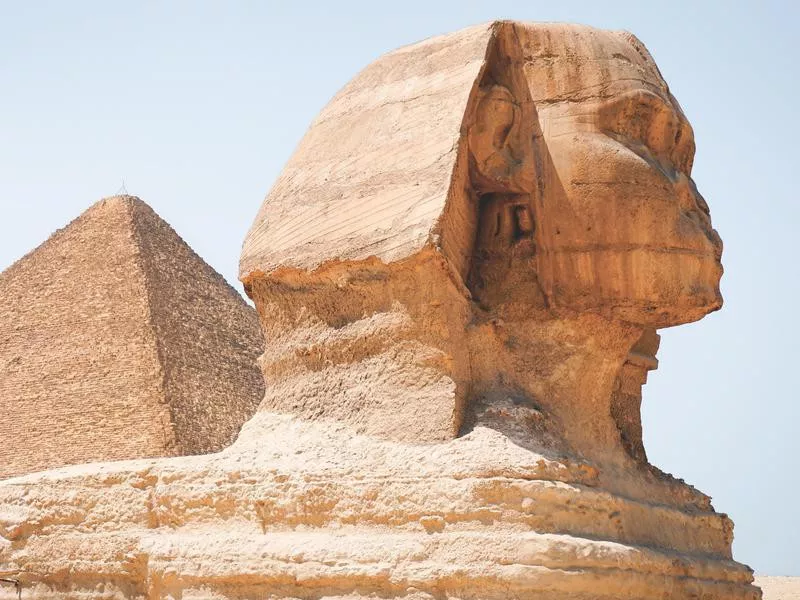
Unsplash
Although we often look at the pyramids as an aesthetically pleasing architectural wonder, the marvelous structures were actually built to be tombs for pharaohs during the Old and Middle Kingdom periods.
Ancient Egyptians believed in more than 2,000 gods.
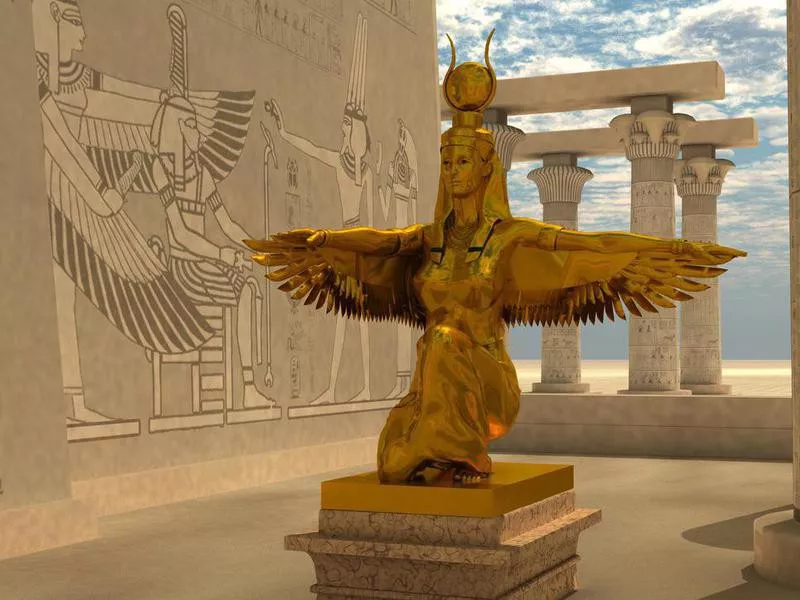
CoreyFord / Getty Images
Religion and the afterlife were extremely important to Ancient Egyptians — the society believed in more than 2,000 gods and deities.
The various gods covered all aspects of life — even chores and other mundane day-to-day parts of life — and were believed to help keep life in perfect balance.
There have been more than 130 pyramids discovered across Egypt.
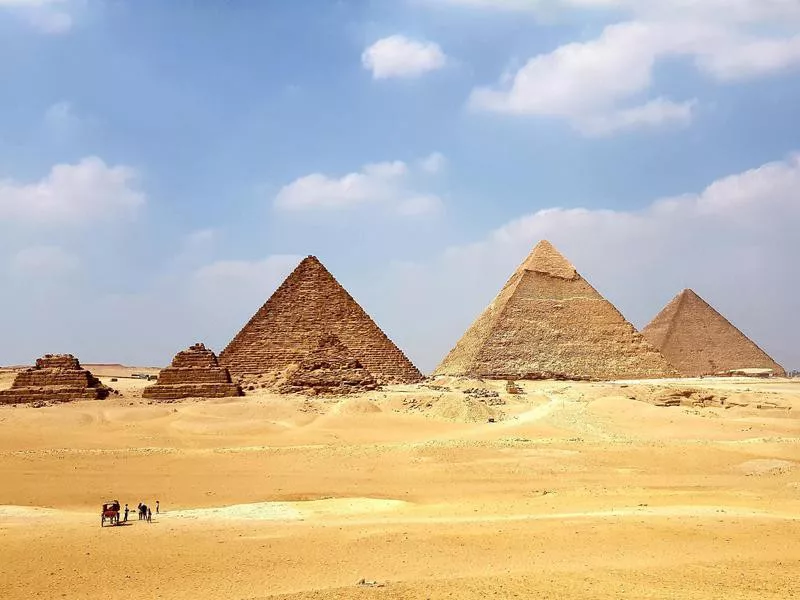
Unsplash
We’re all pretty familiar with the Pyramids of Giza — the Pyramid of Khufu, the Pyramid of Khafre and the Pyramid of Menkaure — but in fact, Egyptologists have discovered more than 130 distinct pyramids across the country.
The Pyramid of Khufu at Giza is the second largest in the world.
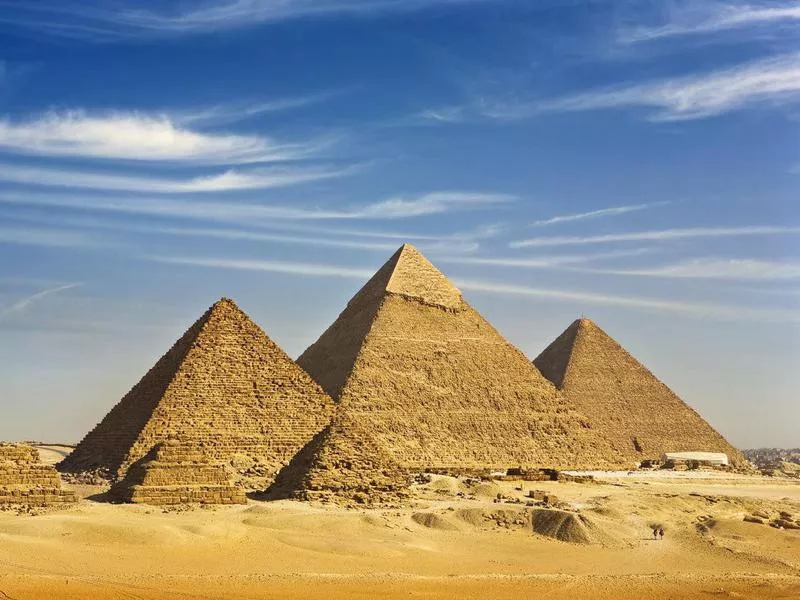
WitR / Getty Images/iStockphoto
Sure, pyramids might not be unique to the Ancient Egyptian civilization, but they certainly built some of the most notorious structures in the ancient world.
The Pyramid of Khufu (otherwise known as the Great Pyramid) is the second largest in the world, second only to the Quetzalcóatl Pyramid in Mexico.
The hieroglyphic alphabet consisted of more than a thousand unique hieroglyphs.
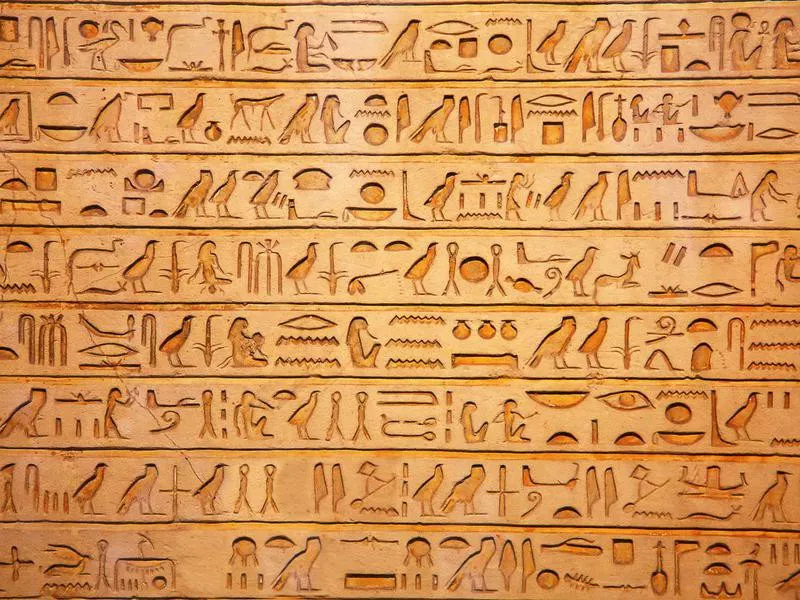
swisshippo / Getty Images
Considered to be one of the earliest forms of written communication, hieroglyphics were the formal writing system used by the Ancient Egyptian society.
The logographic and alphabetic writing system includes more than a thousand distinct characters — including print and cursive symbols.
Cats were considered to be sacred animals.
Ancient Egyptians were known to keep several different animals as pets — and even worshipped certain species.
Dogs, for example, were valued for their ability to hunt and protect their owners, but cats were believed to be, quite literally, magical creatures and were even considered to bring their families good luck.
Many of the items we use today were invented in Ancient Egypt.
You might assume that certain items like pens, paper, hair wax or toothpaste are modern-day inventions — but you’d be wrong!
The Ancient Egyptians actually invented a lot of things that we still use to this day, ranging from beauty products to office utensils.
It took about a mile’s worth of bandages to wrap a mummy.

Hamada Elrasam / AP Photo
Mummifying a body was no small feat and required special priests to remove all moisture from the body — including organs — before treating the body with a drying property.
The most time-consuming process, though, was the actual wrapping of the mummy — which took about a mile’s worth of bandages.
Ancient Egypt is responsible for one of the world’s earliest peace treaties.

yuelan / Getty Images
The earliest surviving peace treaty was originally written in 1271 B.C. by Egyptian Pharaoh Ramses II (Ramses the Great) as well as Hattusilis III, King of the Hittites.
The Egyptian–Hittite peace treaty didn’t actually bring about peace, though, and the Egyptian-Hittite conflict continued for several more years.
Ancient Egyptians were very into board games.
Ancient Egyptians were considered to be very competitive — even down to their pastimes.
The society loved board games and, in particular, loved Senet. The game was believed to start as an ancient version of backgammon — but eventually evolved into something that would be considered similar to a modern-day Ouija board.
Workers in Ancient Egypt regularly organized labor strikes.
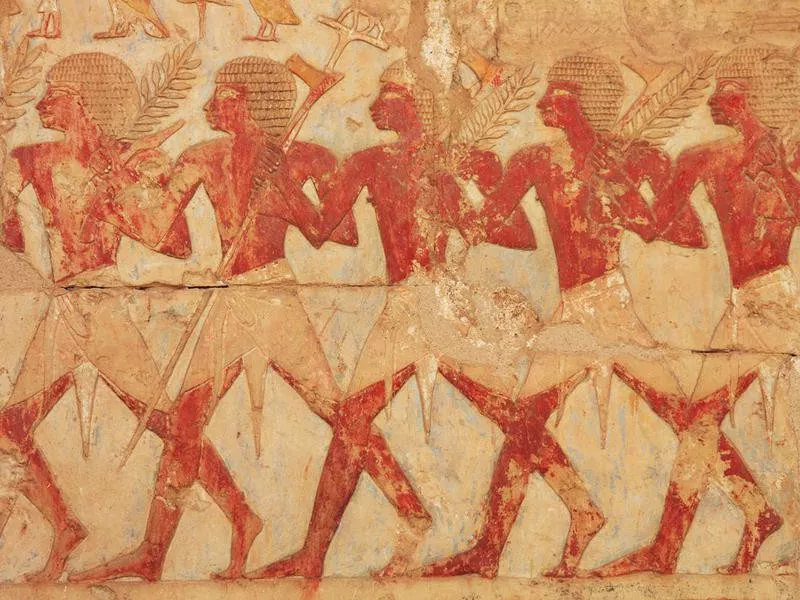
powerofforever / Getty Images
The Ancient Egyptian society is behind the first-ever labor strike in history, dating back to 1170 B.C.
The first strike was against the building of pyramids — but labor strikes were a regular occurance, as Ancient Egyptians worked toward better working conditions.
The pyramids were not actually built by slaves.
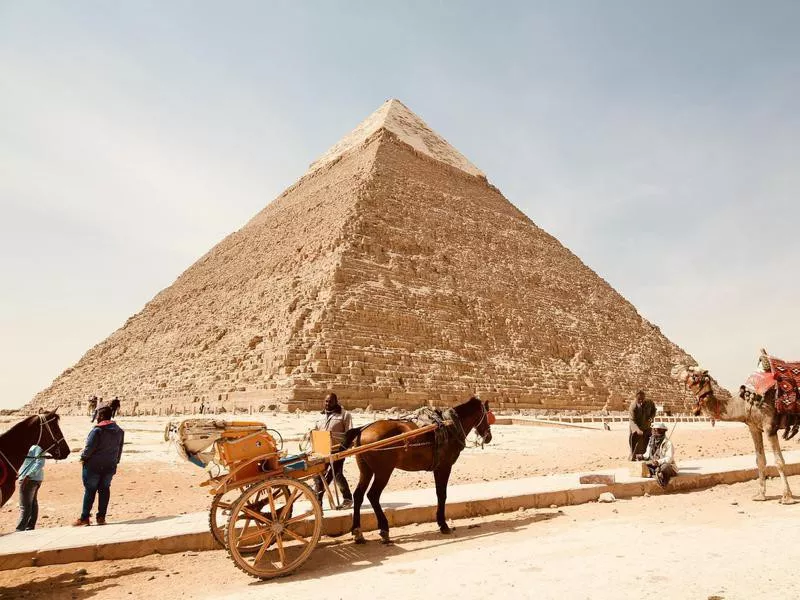
Unsplash
Although slavery was common in the Ancient Egyptian civilization among the wealthy and royal society, the pyramids were not actually built with slave labor.
Egyptologists now believe that the Great Pyramids were, in fact, built by farmers who worked on the pyramids during flooding when they were unable to work on their farms.
Many Ancient Egyptian pharaohs were overweight.
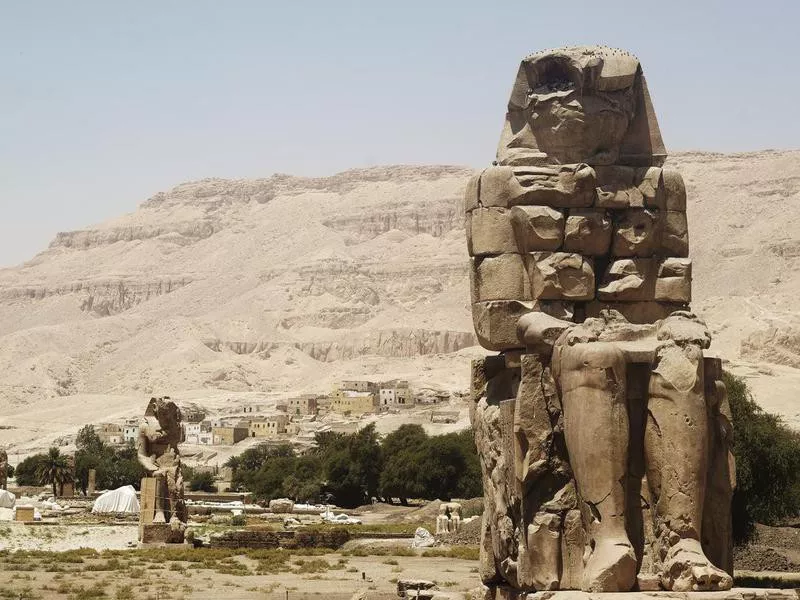
redtea / Getty Images
Ancient Egyptian art and sculptures might depict wealthy members of society and pharaohs as svelte and physically fit.
But Egyptologists have recently discovered that most pharaohs were actually quite overweight — probably due to their diet, which consisted mainly of bread and beer.
Pets were often mummified alongside their owners.
Ancient Egyptians loved their pets and worshiped other animals as well — so much so that certain pets would be mummified to be buried alongside their owners.
Other mummified animals would also occasionally be buried with humans as a food offering for humans in the afterlife.
Cleopatra was much more intellectual than she’s credited for.
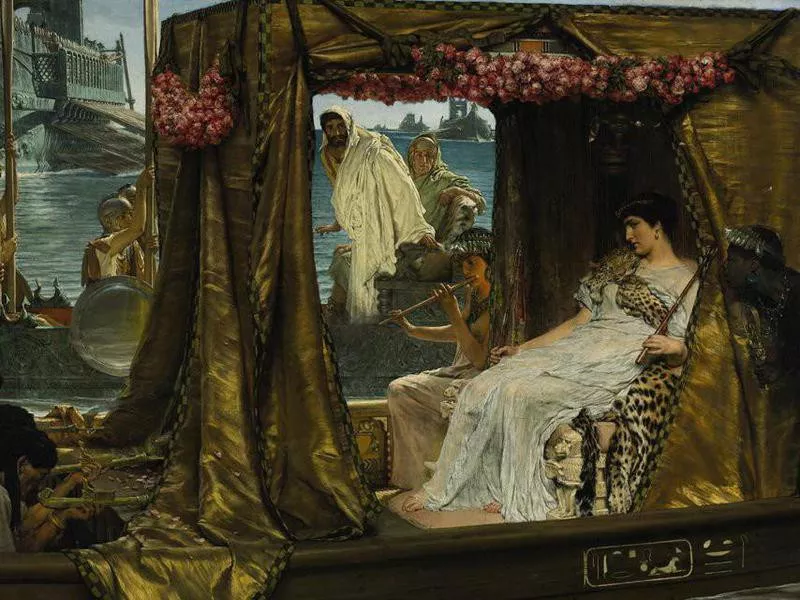
Lawrence Alma-Tadema / Wikimedia Commons
Cleopatra is renowned to this day for her beauty and elegance, but the Ancient Egyptian leader was admired for much more than her physical looks when she ruled the country.
In fact, Cleopatra spoke a dozen languages, was educated in mathematics and philosophy, and spent much of her time with scholars.
Ancient Egyptians were probably the first society to read and write.
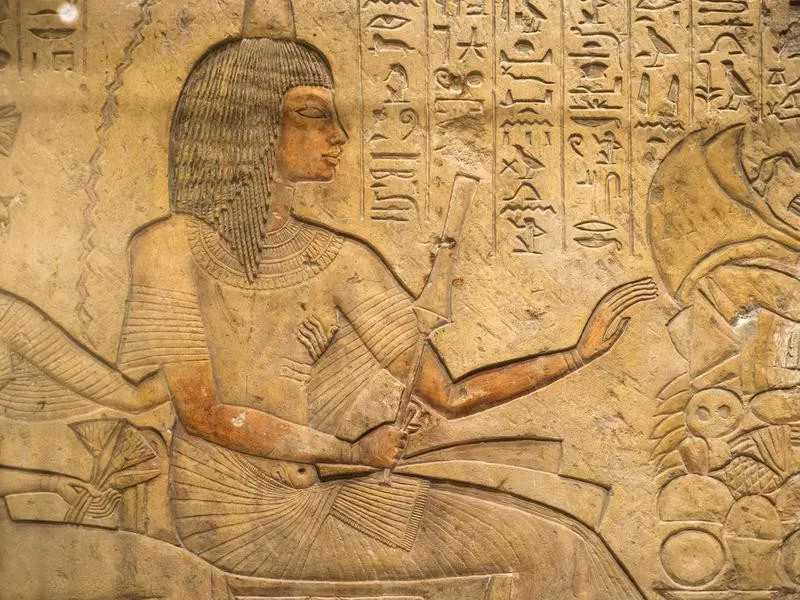
yuriz / Getty Images
Although historians continue to uncover new research regarding which society was the first to invent writing, many scholars believe that the earliest solid evidence of reading, writing and literature as a society dates back to Ancient Egypt.
Cleopatra teamed up with Julius Caesar to kill her brother-husband.
Cleopatra and Julius Caesar had a mutually beneficial relationship — Cleopatra required Julius Caesar’s army, while Caesar required Cleopatra’s incredible wealth.
The duo murdered Cleopatra’s brother-husband, Ptolemy XIV, so that her son could co-reign with her.
Having excess body hair was frowned upon in Ancient Egypt.
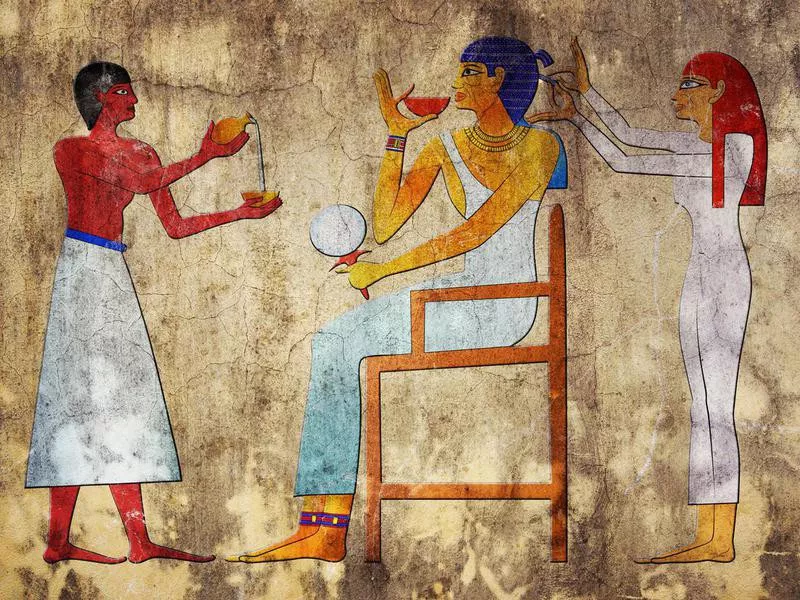
siloto / Getty Images/iStockphoto
Ancient Egyptians considered being hairy as a sign of inferior social status — as such, Egyptian priests would shave their entire body every three days.
The society created primitive tools for shaving, including the first-ever waxing paste (a mix of sugar and beeswax).
Some people believe that King Tut was killed by a hippopotamus.
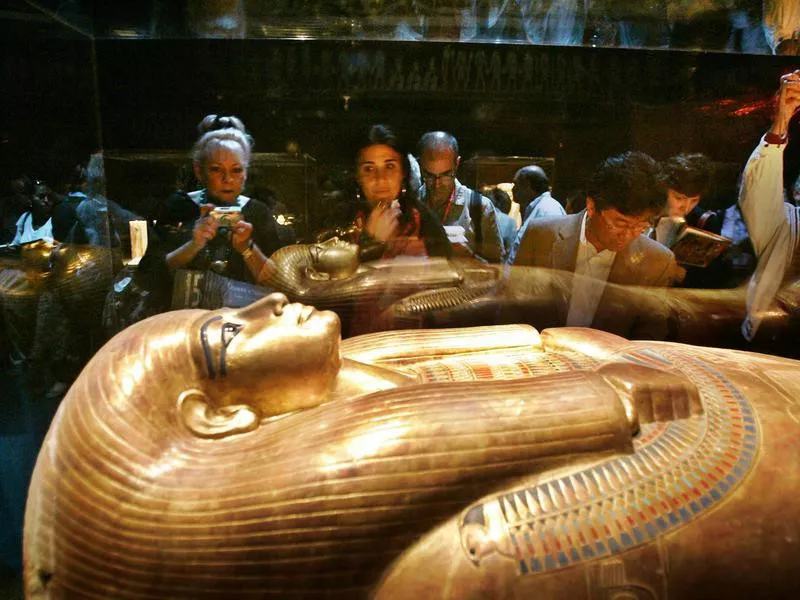
Ric Francis / AP Photo
There are many theories surrounding exactly how King Tut passed away at the young age of 19, but one of the most prominent beliefs is that he was killed by a hippopotamus.
Egyptologists believe the hippo charged at Tut, who couldn’t run away fast enough due to his clubfoot and broken leg.
Pharaohs were often buried alongside models of their servants.
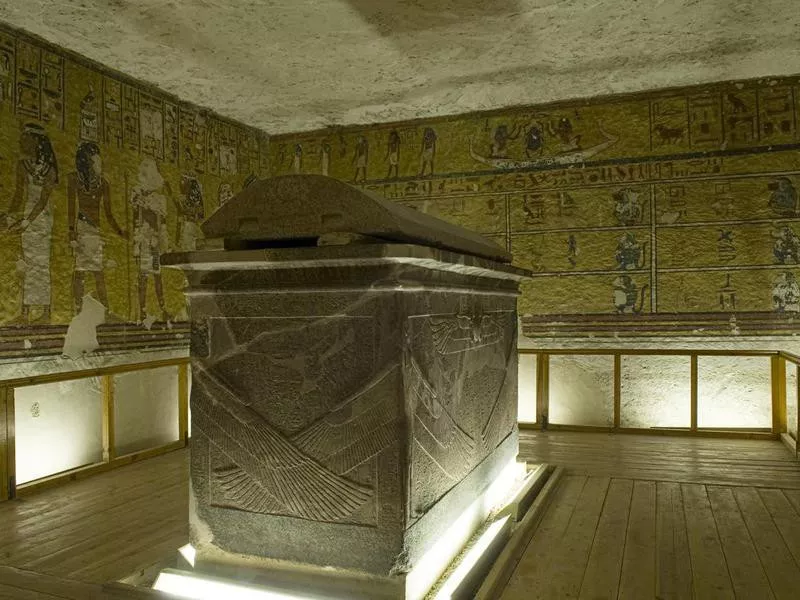
franckjoseph / Getty Images
Pharaohs were often buried with everything they’d need in the afterlife — which is why their tombs were so large.
Most pharaohs were even buried alongside models of their servants. This was actually considered a huge improvement — early pharaohs were originally buried with real, live servants.
There were even toilets built into some tombs — just in case.
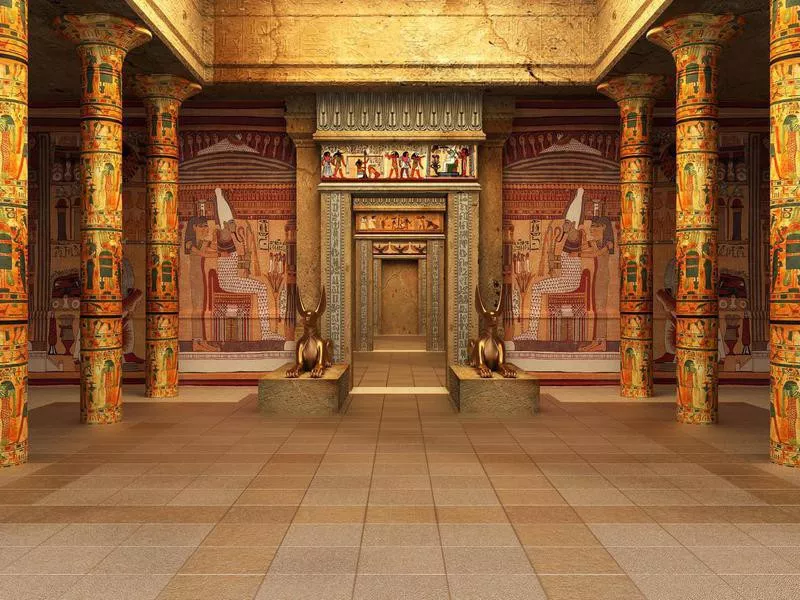
AlexVenge / Getty Images
Another most amazing inclusion that Egyptologists have found within tombs has been built-in toilets.
You never know, right?
Mouse bones were believed to cure bedwetting in young Egyptians.
Mice were a common prescription for Ancient Egyptian children — when infants were ill, mice were eaten as a treatment by their mothers, who would help heal the ill child.
Mouse bones were also strung around the necks of children who were experiencing bedwetting.
Ancient Egyptians commonly used cannabis as medicine.
Ancient Egyptians used a whole lot of different herbs and potions to help with ailments and afflictions — one of the most common being cannabis.
The Ancient Egyptians regularly used cannabis to help with the pain of hemorrhoids and to treat sore eyes.
Wearing lots of jewelry was considered to be a way to please the gods.

Nariman El-Mofty / AP Photo
Ancient Egyptians loved their jewelry — often piling on as much as they could get their hands on.
Although this was considered to be aesthetically pleasing — wealthy Egyptians had jewelry made out of solid gold — it was also considered to be an important way to get the attention of the gods.
Servants were sometimes covered in honey to keep flies away from pharaohs.
Being a servant for an Ancient Egyptian pharaoh came with a lot of nefarious practices — especially in the civilization’s earlier years.
Certain pharaohs, including Pepi II Neferkare, instructed their servants to cover themselves in honey to attract flies to the servant, rather than the pharaoh.